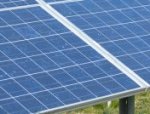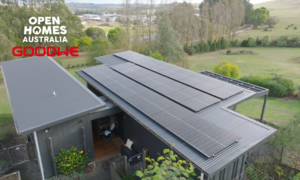While solar power is generally perceived as clean and green and small solar farms can make good use of unproductive or degraded farming land; some have raised concerns about the construction of large solar farms on undeveloped land. There is a solution that’s sitting right in front of us, or more accurately, above us.
California’s big solar push is giving birth to some very large projects, such as several solar plants to be constructed on 41 square kilometres in eastern San Luis Obispo County. Just one of the projects, the 550-megawatt photovoltaic Topaz Solar Farm, could power about 190,000 homes. While only a small slice of the pristine desert would be dedicated to solar farms if the projects are approved, environmentalists are concerned that this would be just the beginning.
Democratic California Senator Dianne Feinstein is opposing the developments on the grounds that the lands are not only tourist attractions that generate revenue but also are home to endangered wildlife, cactus gardens and other plant life. According to the Senator, the Bureau of Land Management is currently reviewing 130 applications for solar and wind energy development in the California desert, covering more than 1 million acres of public land.
While situations such as this could see pressure on previously solid alliances between the renewable energy sector and environmental groups, an alternative often overlooked is the potential of grid connect solar power playing a greater role in towns and cities. Our settled areas are a sea of under-utilised roof space; all potential platforms for solar power generation. In Australia for example, there is enough rooftop space to provide the nation’s power needs.
Aside from avoiding encroachment upon environmentally sensitive areas, another advantage of generating power close to where it will be consumed is minimsing line loss. As electricity travels through cabling, it loses some of its energy through heat. The longer the journey from generation source to consumption, the more energy is lost. This line loss and associated heat generation also plays a role in power supply problems during summer when blackouts are becoming increasingly frequent.
Additionally, a distributed power system such as can be achieved through grid connect solar power installed extensively on residential commercial buildings has some national security benefits, in that any concentration of power generation facilities can be an easy target.
Renewable energy and the environment can easily co-exist peacefully; we may just need to focus more on implementing it where we have already made our mark; and that will require governments throwing more support behind “power to the people” by increasing the availability and quality of rebates and feed in tariff programs.












































